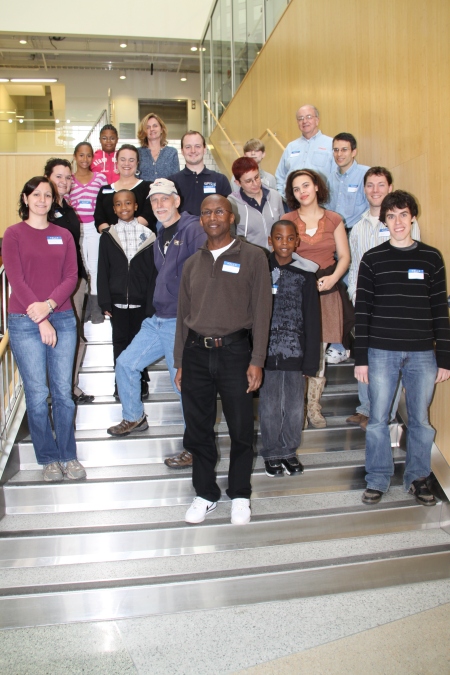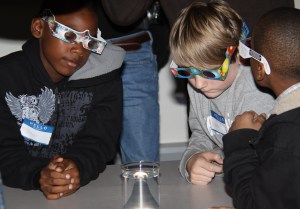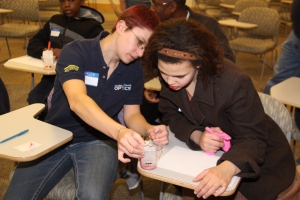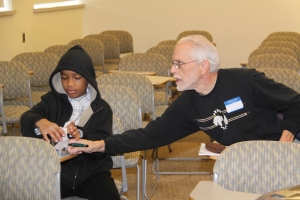Recently, the University of Rochester’s doctoral program in Optics hosted members of the STEM Mentor Program.
The STEM (Science, Technology, Education and Math) Mentor Program is an innovative partnership between The Rochester Area Colleges Center for Excellence in Math and Science (The Center) and Big Brothers Big Sisters of Greater Rochester.
STEM Bigs (who have an interest/education/or career in STEM fields) and Littles (whom are in grades 4-6) visited the University of Rochester’s Institute of Optics in Goergen Hall for a highly interactive afternoon of optics fun.
Doctoral students working with Professor Andrew Berger presented “Optics is Everywhere” – showing the Littles that, indeed, the field of optics is something they experience everyday. They also got to experiences aspects of optics they never had before, such as looking at their skin via a heat imaging camera.
A huge thank you to Dr. Berger and his students for sharing their passion with the STEM Mentor Program. It was a wonderful opportunity for the Littles not only to learn about Optics, but to visit a university campus and to see a diverse group of scientists at work (and play!)
Enjoy these photos that capture the spirit of the day.











 Posted by caurie
Posted by caurie 
